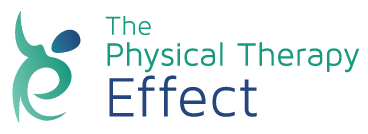Focused, One-on-One Physical Therapy Treatment
Postural Re-Education
Improve Posture. Restore Muscle Adaptation.
Postural re-education strategies can be an effective way for patients to expand their range of motion and decrease ongoing pain. Imbalances in posture can cause sensory dysfunction, making it harder to get through everyday life activities such as sitting at a desk or waiting in line at the grocery store. A physical therapist can help patients explore those restrictions or asymmetries in the body and find a method of muscular and mechanical restoration.

What Is Postural Restoration?
In the realm of postural re-education, there is postural restoration. Postural restoration is the therapeutic process that focuses on polyarticular chain interference. This practice began as a way for practitioners to understand how our muscles interact with one another and assess the effects of kinematic movement dysfunctions in the body. From this point, postural restoration was born to help everyday people improve posture and reduce any associated pain.
What Are the Risks of Having Poor Posture?
Poor posture, or having imbalances of the muscles and joints, can lead to chronic pain, tension, and tiredness. When there is poor posture in one area, it can throw off the body’s natural ability to adapt to everyday movement and lead to the overstrain of another part of the body.
Who Is Postural Restoration Therapy for?
Many of us spend hours sitting at desks and hunched over our computers. So, everyone in the modern age could benefit from posture education techniques. However, there are some patients with the following conditions who may particularly benefit from the practice, including:
What Are the Benefits of Postural Restoration?
Everything is interconnected within the body. The central nervous system is connected to our vestibular, respiratory, and muscle systems. When we hold good posture within our environments, it creates a balanced relationship for all of our everyday activities. The benefits of postural restoration and education techniques can help us be healthy and thrive with minimal pain and optimal balance in our physical movements.
What Is the Importance of Symmetry in Postural Restoration Therapy?

Most people are not one hundred percent symmetrical, however, overall symmetry is important for how our weight is distributed over time. Not having enough symmetry can make certain movements harder, or the imbalance could lead to musculoskeletal pain throughout the body.
What Are Some Signs of Asymmetry?
Siting in certain positions or overstressing certain parts of the body can throw the symmetry of the joints and skeletal system off balance. This lack of balance within the connecting parts of our bodies can start to become noticeable with aggravating symptoms such as:
What Postural Restoration Techniques Are There?
There are several techniques a therapist may use as a part of postural restoration therapy. After a biomechanical assessment, a professional will test different movement exercises to increase the nervous system connection and stabilize the body.
Myofascial Release
Myofascial release is a common method used by many physical therapy professionals. It works through the application of pressure on stiff trigger points to improve lymphatic circulation. This technique can improve posture by toning the fascia and releasing pressure.
Gait and Postural Improvement Exercises
Gait training can improve posture by having patients perform “routine” movements with more awareness such as walking on a treadmill or sitting down and standing up repeatedly. These exercises move different areas of the body and can improve overall balance and mobility.
Muscle Energy Techniques
The muscle energy technique is a posture correction exercise. It works by stretching out the muscles of a patient while they lay on their side to correct improper posture and release tension through the use of isometric contractions.











